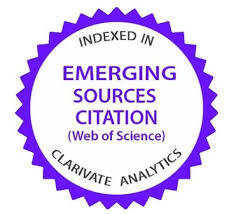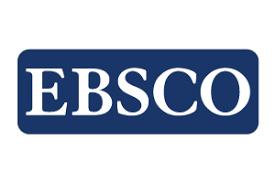Coffee pickers in Mexico: The underworld of decent work
DOI:
https://doi.org/10.35197/rx.12.01.e1.2016.06.jhKeywords:
day laborer, labor market, agricultureAbstract
The aim of this article was to explain the difficulties that arise in getting coffee pickers to enter into decent work relationships.
To achieve this, the following structure was designed to present the research.
In the first section, the environment in which the labour market is developed is analysed. In this section, employers are characterised, trying to identify the importance of the different strata in production and employment, to identify employment alternatives in the producing localities, some trends in the harvested surface area, as well as the existing difficulties for productive reconversion.
In the second section, some factors that affected the majority of producers are pointed out, starting with the deregulation of the coffee market and the effects that this had on their impoverishment, and in many cases, the abandonment of the activity by the producers.
In the third section, the socioeconomic condition of the day laborers is analyzed, emphasizing some characteristics that are relevant in the incorporation of people into the labor market, such as illiteracy, limited formal education, and indigenous language speakers, with the purpose of explaining their reduced capacity for labor mobility in formal labor markets.
In the fourth section, the characteristics of their occupation, their income levels, are analyzed, and some elements of the consumption structure are presented, since their income necessarily determines their consumption, which is monotonous, reduced, and of low nutritional quality.
Coffee pickers are an important group of agricultural day laborers, who are employed without contracts, without benefits, who work four months a year in coffee, where a third of those employed are over 50 years old, and their income only reaches them to eat tortillas and beans regularly during the period of greatest employment. For this reason, it is pointed out that if there is a floor in decent work, it is the coffee pickers who are found there.
Downloads
References
Cruz, A. R. (2013). Cafés negros y rojos en Chiapas: entre la barbarie y desarrollo desde abajo, El México bárbaro del siglo XXI. Ed. UAM-X.
Goffman, E. (2006). Estigma. La identidad deteriorada, Amorrortu. Disponible en: Editoresfile:///C:/Users/JOSE%20MANUEL/Downloads/GoffmanEstigma%20(1963)%20(2). pdf. Consultado en noviembre 2015.
Hernández, T. J. M. (2007). Regulación de los mercados de trabajo rural en México, Tesis de Grado UAM.
Macip, P. R. F. (2007). Racismo y superexplotación: los jornaleros indígenas en el ejército industrial de reserva. Bajo el volcán, 7(11), 45-60.
Mestries, F. (2003). Crisis cafetalera y migración internacional en Veracruz. Migraciones internacionales, 2(2), 121-148.
Paré, L. (1990) ¿Adelgazamiento del INMECAFE o de los pequeños productores de café. Revista Sociológica, 133-144.
Pérez, A. P. y Huacuja, F. E. Cadenas globales y café en México.
Ramírez, R. L. R., y Zapata, E. Derecho al juego de niños y niñas en fincas cafetaleras del Soconusco, Chiapas.
Ramírez, S. J., Palacios, N. D., y Velazco, S. D. (2006). Diagnóstico sobre la condición social de las niñas y niños migrantes internos, hijos de jornaleros agrícolas. Disponible en: http://revistarayuela.ednica.org.mx/sites/default/files/25.pdf. Consultado en septiembre 2014.
Ramírez, V. B. R. y Romo, A. G. (2006). La migración como respuesta de los campesinos ante la crisis del café: estudio en tres municipios del estado de Puebla. Ra Ximhai, 2(2), 319-341.
Salinas, E. (2000). Regulación y desregulación en el caso del café. Análisis económico, 15(31), 185- 205.
SEDESOL-PRONJAG. (1996). Programa de mediano plazo, para la atención de los jornaleros agrícolas (1995-2000).
SEDESOL. (2009). Encuesta Nacional de Jornaleros Agrícolas. Disponible en: http://www.cipet.gob.mx/jornaleros/. Consultado en marzo 2012.
Downloads
Published
How to Cite
Issue
Section
License
Copyright (c) 2016 José Manuel Hernández Trujillo

This work is licensed under a Creative Commons Attribution-NonCommercial 4.0 International License.
Usted es libre de:
- Compartir — copiar y redistribuir el material en cualquier medio o formato
- Adaptar — remezclar, transformar y construir a partir del material
- La licenciante no puede revocar estas libertades en tanto usted siga los términos de la licencia
Bajo los siguientes términos:
- Atribución — Usted debe dar crédito de manera adecuada , brindar un enlace a la licencia, e indicar si se han realizado cambios . Puede hacerlo en cualquier forma razonable, pero no de forma tal que sugiera que usted o su uso tienen el apoyo de la licenciante.
- NoComercial — Usted no puede hacer uso del material con propósitos comerciales .
- No hay restricciones adicionales — No puede aplicar términos legales ni medidas tecnológicas que restrinjan legalmente a otras a hacer cualquier uso permitido por la licencia.








